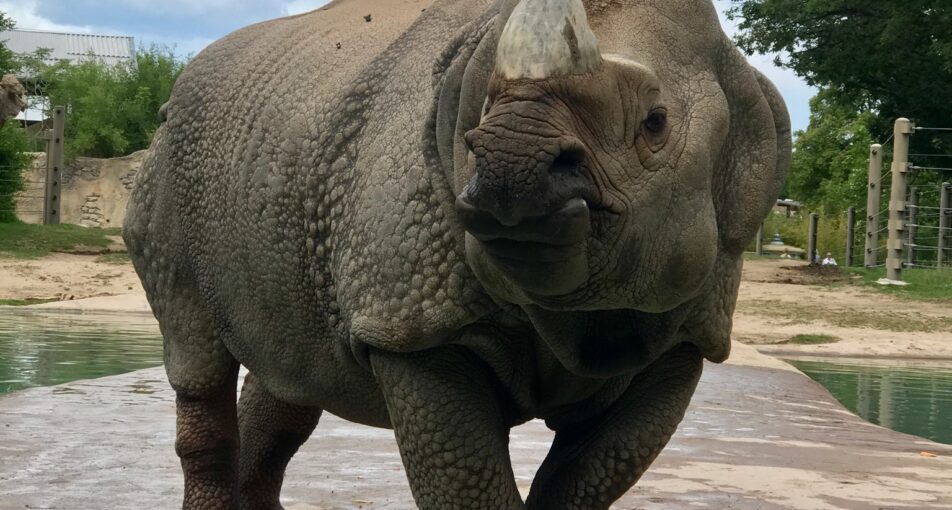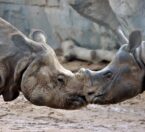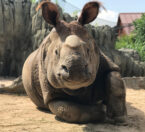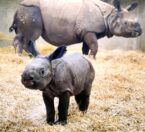Rhinos are the only animal with a horn on the nose not the top of the head. Made from compacted hair or keratin, the horn is used for plowing the ground looking for food, and self-defense. Baby rhinos are born without horns, but the horn quickly begins developing and grows throughout the animals’ lives.
Classification
| CLASS: | Mammalia |
| ORDER: | Perissodactyla |
| FAMILY: | Rhinocerotidae |
| GENUS: | Rhinoceros |
| SPECIES: | unicornis |
Habitat & Range
The habitat of the greater one-horned rhino is tropical grasslands and adjacent flood plains and forests. They prefer tall grasslands and thick forest areas.
Greater one-horned rhinos are found in Nepal and Northeastern India, mostly in protected areas, like national parks and wildlife reserves.
Location


Adaptations
- Rhinos have short stout limbs that help support their weight. They walk on their toes and have a soft pad under their toes that helps cushion their steps. Despite their bulk they can run up to 35 miles per hour over short distances.
- They have a prehensile lip that curls around the stems of the tall grasses, leaves and shrubs they eat.
- Their small eyes are positioned on the sides of their head so to look at an object in front of them they have to look with one eye then turn their head and look with the other eye. Resulting vision is very poor.
- They have excellent hearing but they rely most on their sense of smell for knowledge of their surroundings.
- They have two tusk-like incisors in their lower jaw used when fighting for territory or females.
- These rhinos are very aquatic and good swimmers. They spend time in pools or mud wallows to combat the heat and protect themselves from bugs.
Physical Description
- Greater one-horned rhinos are covered with deeply folded gray skin. The skin is accentuated by tubercles (lumps) resembling rivets which give them a unique armor plated appearance.
- They weigh 4000-6600 pounds (2200-3000 kg). Males are larger than females.
- They can be up to 12.5 feet (3.8 m) long and stand 5-6 feet (1.5-1.8 m) at the shoulder.
- Both males and females have a single dark horn up to 21 inches long (53 cm) on their nose.
Diet
What Does It Eat?
In the wild:
Greater one-horned rhinos are grazers eating grasses, twigs, leaves, shrubs, aquatic plants, fruit and cultivated crops. They drink water daily.
At the zoo:
At Denver Zoo the rhinos are fed grass hay, alfalfa, wild herb grain and browse.
What Eats It?
Tigers and humans are their only predators.
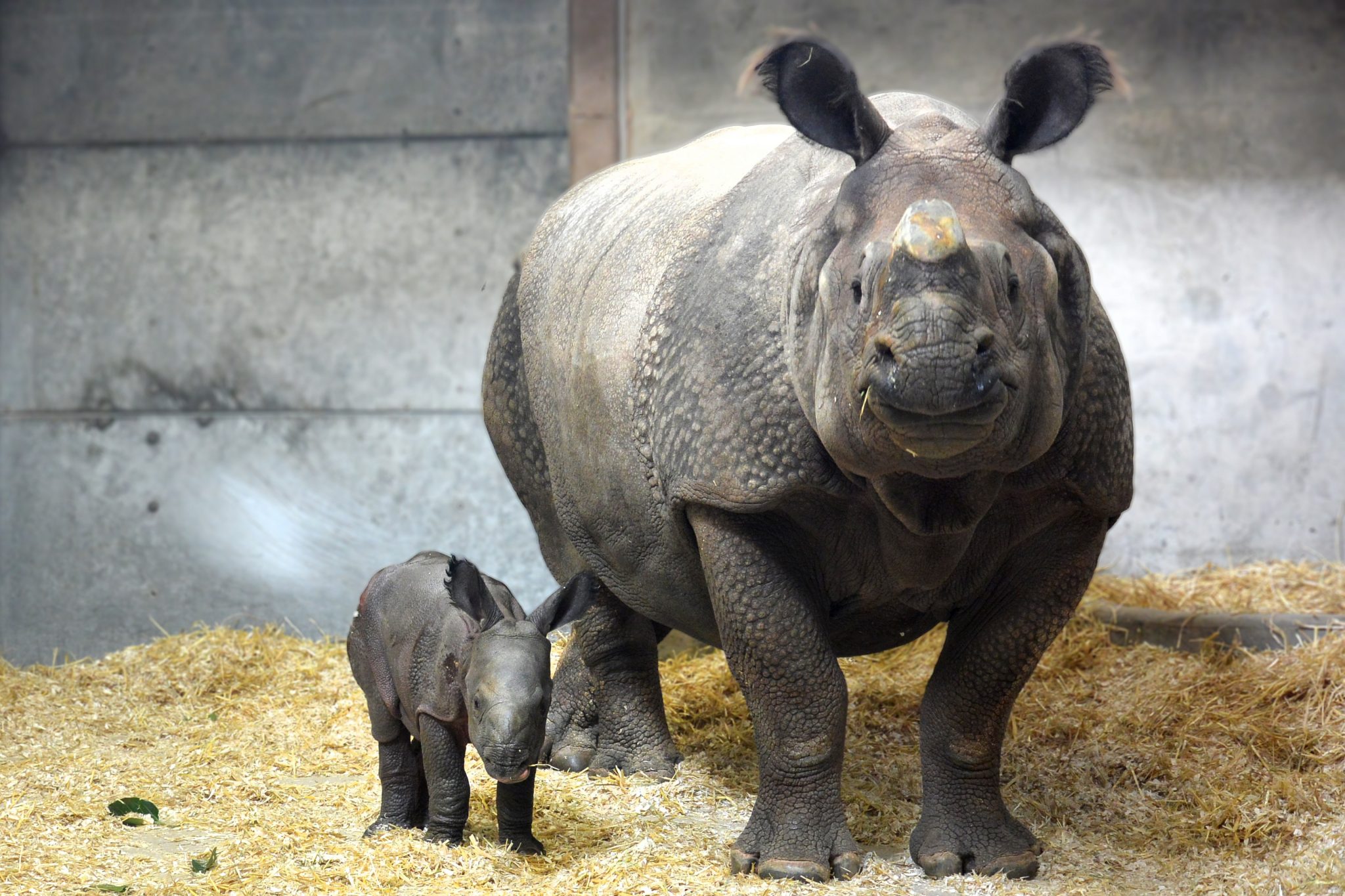
Social Organization
These rhinos are primarily solitary except for mating pairs and females with young. They may form loose aggregations around forage areas or mud wallows.
Life Cycle
Females are sexually mature at four years and males at nine years. Males fight for breeding rights with only the most dominant male earning the right to mate. Courtship can be violent and copulation can last up to one and a half hours with the male mounted the entire time. After a gestation of 15-16 months, the female gives birth to a single calf weighing 80-125 pounds (36-57 kg). The calf stands two feet tall (60 cm) at birth and can walk within an hour. The calf is weaned at about 18 months but will stay with mom for about three years until a new baby is born. Greater one-horned rhinos live 35-40 years in the wild and up to 45 years in managed care.
